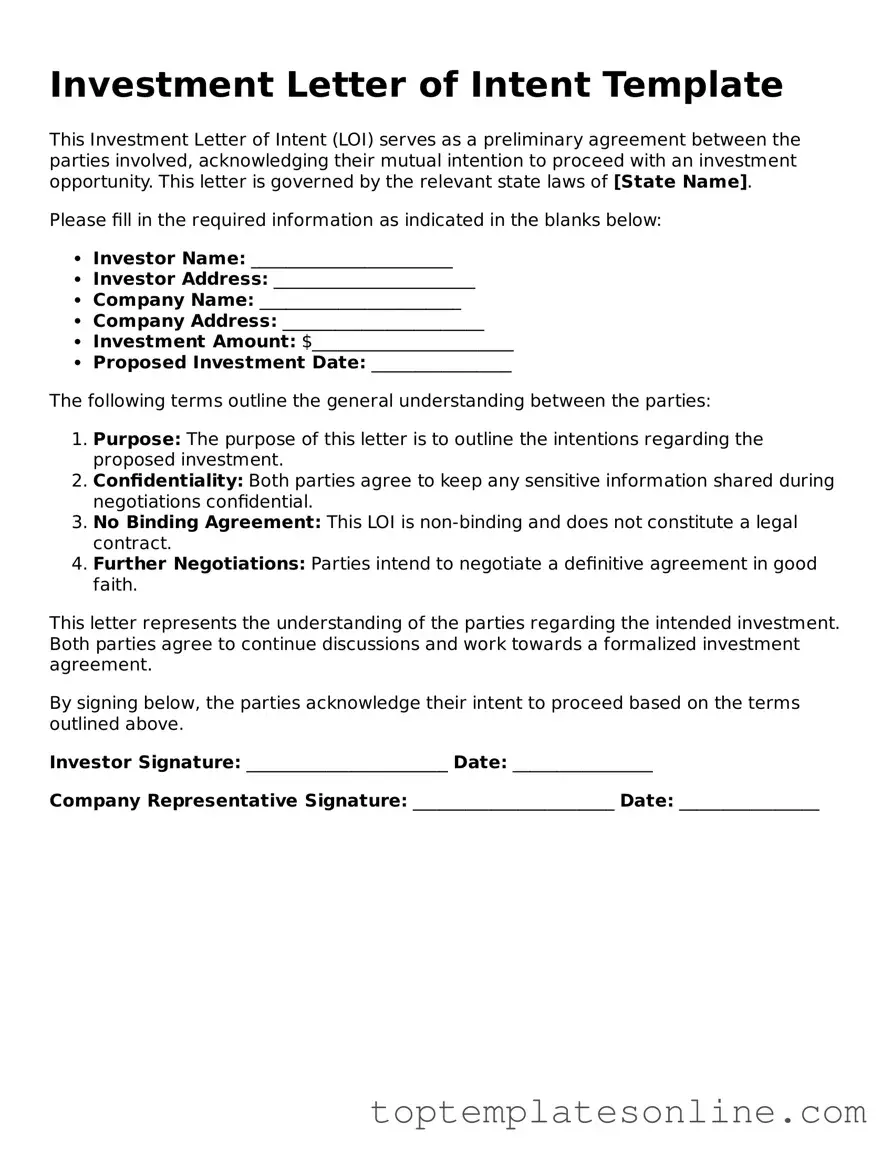Attorney-Approved Investment Letter of Intent Form
An Investment Letter of Intent (LOI) is a document that outlines the preliminary terms and conditions of a potential investment agreement between parties. This form serves as a starting point for negotiations and helps clarify the intentions of the investors and the entities seeking funding. By setting forth key details, the LOI can facilitate a smoother transaction process.
Customize Investment Letter of Intent Here
